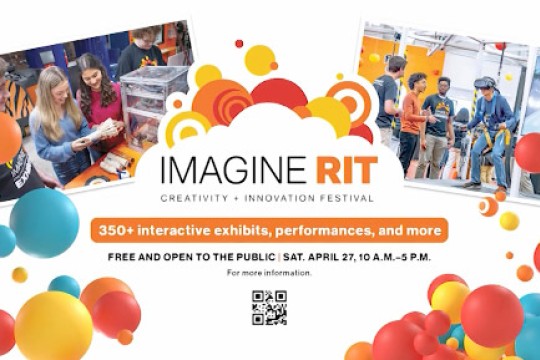Local husband-wife team wins Data Challenge
Project graphically illustrates the correlation between countries’ economic confidence and restricted press
Bogdan and Stephanie Yamkovenko
If a picture is said to be worth a 1,000 words, can thousands of numbers be conveyed as a single, compelling image?
Husband-wife team, Bogdan and Stephanie Yamkovenko, were able to make that happen, and won first place in the 2012 Data Visualization Challenge sponsored by The Economist magazine and Nielsen. They were among 4,000 contestants from 101 countries who submitted visual solutions to complex data sets compiled from Nielsen’s Global Consumer Confidence Survey and Global AdView Pulse Report.
The data sets of economic indicators—consumer confidence, job growth, employment and debt levels—from 35 countries were the baseline for the competition. The contestants had to both analyze the data and illustrate the findings in graphics that could be easily understood by a broad variety of readers, says Bogdan Yamkovenko, assistant professor of human resource development at Rochester Institute of Technology.
“It wasn’t just, here’s the consumer confidence in this country,” he says. “It was more like, what kind of story can you tell about this?”
This was the first time the couple had entered The Economist’s international contest and also the first time they collaborated as a working team. They were recognized for their project, “How Freedom of the Press Affects Consumer Confidence” and were awarded $10,000 for the first place finish. They also were featured presenters at The Economist’s World in 2013 Festival in December in New York City.
“When we entered, I was telling Stephanie that everyone was going to laugh. We had this whole freedom of speech thing going on, and the data set was more on consumer spending,” says Bogdan, who has been with RIT’s College of Applied Science and Technology for the past two years. “I was thinking, this was sort of out there. It would probably generate some laughter on the part of the judges, but apparently not.”
The Yamkovenkos used cluster analysis and multi-level modeling techniques to assess the data and organize the information. Their analysis indicated certain countries, such as Saudi Arabia, China and the United Arab Emirates, seemed overly confident in their economy.
“One of the things we noticed right away was that the countries with the highest confidence in their economy are not necessarily the economies that were doing the best, but were more the governments that were controlled the most,” says Stephanie Yamkovenko, a journalist at a national health care association in Washington, D.C. “My first thought was, is this happening because of information flow? Perhaps the government is telling them that their economy is OK, and they are believing it. That’s how we decided to supplement the data set with information from the Freedom of the Press Index from Reporters Without Borders.”
The supplemental material helped explain the variance in consumer confidence and also of social-political circumstances occurring in the country.
“Adding the Freedom of the Press Index data allows you to tell a story about how these things are related and how important it is to allow a free press to operate in the country,” says Stephanie. “And obviously when the press is restricted, consumers turn to social media and the Internet in a search for the truth, for accurate information.”
Visualizing data by a global community of problem-solvers was an unusual competition, but data visualization has become a popular means of clarifying information, says Stephanie.
“Data visualization is a popular term lately, and one of the things that we talked about at the conference is that we really think data visualization is moving past ‘info graphics’ which just shows pretty pictures with numbers, and moving toward more in-depth analyses in terms of statistics,” she says.
A video from The Economist World in 2013 event featuring Bogdan and Stephanie Yamkovenko’s presentation is available.















